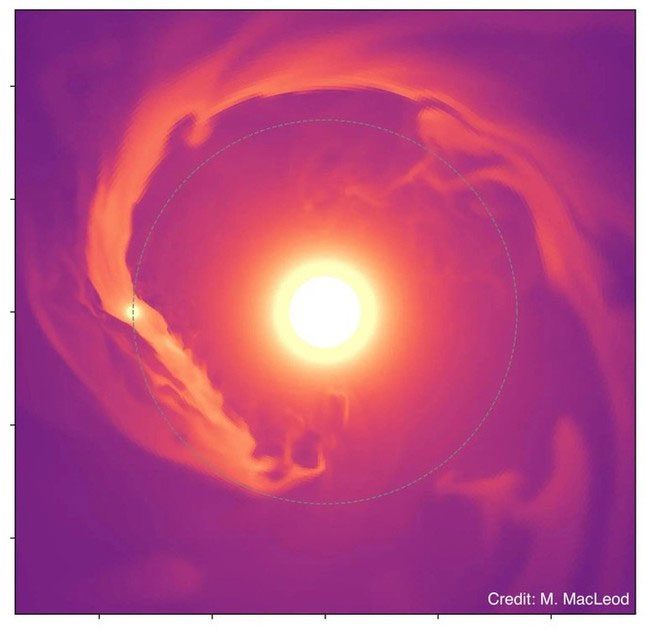A gigantic hot Jupiter-like planet has emerged before American observatories, showcasing peculiar tails, with the primary tail being 53 times longer than the radius of the celestial body itself.
Hot Jupiters are a type of gas giant similar to Jupiter in our Solar System, but they orbit too close to their parent star, resulting in extreme heat rather than the coldness found in our neighboring world.
Referred to as HAT-P-32b, this hot Jupiter is emitting bizarre gaseous tails into the surrounding space. A new study reveals that it is in the process of “shedding its skin.”

HAT-P-32b possesses gigantic gaseous tails – (Image: M. Macleod).
Scientists utilized data from the Hobby-Eberly Telescope located at the McDonald Observatory of the University of Texas at Austin (USA) and performed three-dimensional simulations on the Stampede2 supercomputer at the Texas Advanced Computing Center (TACC) to model the atmospheric flow of the planet.
“What we found is a massive helium tail attached to this planet, extending 53 times the planet’s radius, formed by gas escaping from the planet,” said Dr. Zhoujian Zhang from the Department of Astronomy and Astrophysics at the University of California, Santa Cruz, the lead author of the study recently published in the journal Science Advances.
According to Sci-Tech Daily, there are other fainter tails in the data that could be older helium streams.
The most supported hypothesis for the formation of these strange tails is that the planet is in the process of losing its atmosphere, continuously releasing helium into space.
This phenomenon has long been suspected in the “Neptune Desert” area of star systems, an inexplicably scarce region for medium-mass planets with short orbital periods.
The model also indicates fascinating interactions between the planet and its parent star, a Sun-like star, and shows that this atmosphere is so thick that it would take an astonishing 400 billion years to exhaust its “fuel.”


















































